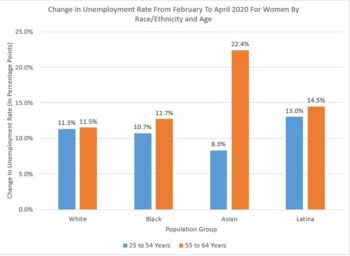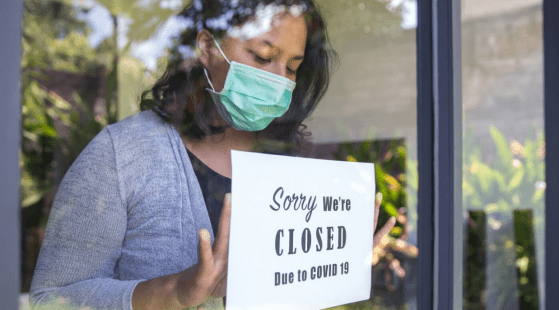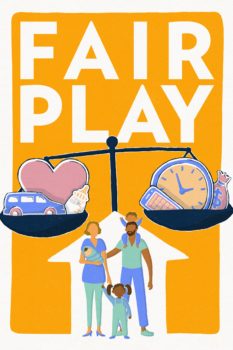It’s become clear that we may be entering a “shecession.” The coronavirus pandemic has shaken up the lives of most women, taking us from an economy that was briefly dominated by working women to one where nearly half are now unemployed. While worrisome numbers about the impact of the pandemic have taken on a gender lens, many statistics haven’t painted the whole picture. Studies have highlighted that women, who are more likely to work in fields with lower wages, fewer benefits, and more health risks, are hurting from the societal effects of COVID-19. But it’s crucial to acknowledge the effects age, race, ethnicity, and marital status have on the distribution of economic consequences. Going beyond headlines that plainly state “women are getting the worst of the recession,” data shows that demographics play a significant role in how coronavirus is changing women’s employment and financial status.
Key findings show that women of color have had the sharpest declines to their employment-to-population ratios (the percentage of working age population) in a one month span. From February to April 2020, Black, Asian, and Latina women suffered larger losses to their employment ratio than white women, with Latina women seeing the biggest drop. The lack of opportunities afforded to women of color, along with widespread discrimination is one reason they’re hurt the most by a recession.
Women’s marital status is also an important component when assessing data. Across all ethnic groups analyzed, married women had lower unemployment rates than single women. This is in part due to married women being more likely to have financial support and divided responsibilities with their spouses—providing them with more choices to either seek new employment or leave the workforce altogether. Women without such support are left struggling during the economic downturn.

Age also has an effect on women’s economic standing during the pandemic. White women and women of color ages 25 to 54 years old have been more likely to experience job loss than older women, with the exception of Asian women. Younger women are also more likely to have more financial responsibilities, including children, and are more likely to be the sole breadwinners in their families than older women.

In order to effectively address this “shecession,” leaders and policymakers need to move past using one-size-fits-all data and consider women’s unique experiences in this crisis.
Take Action! While legislators seek to combat the economic downturn, advocate for policies that take an intersectional approach to women’s needs.




